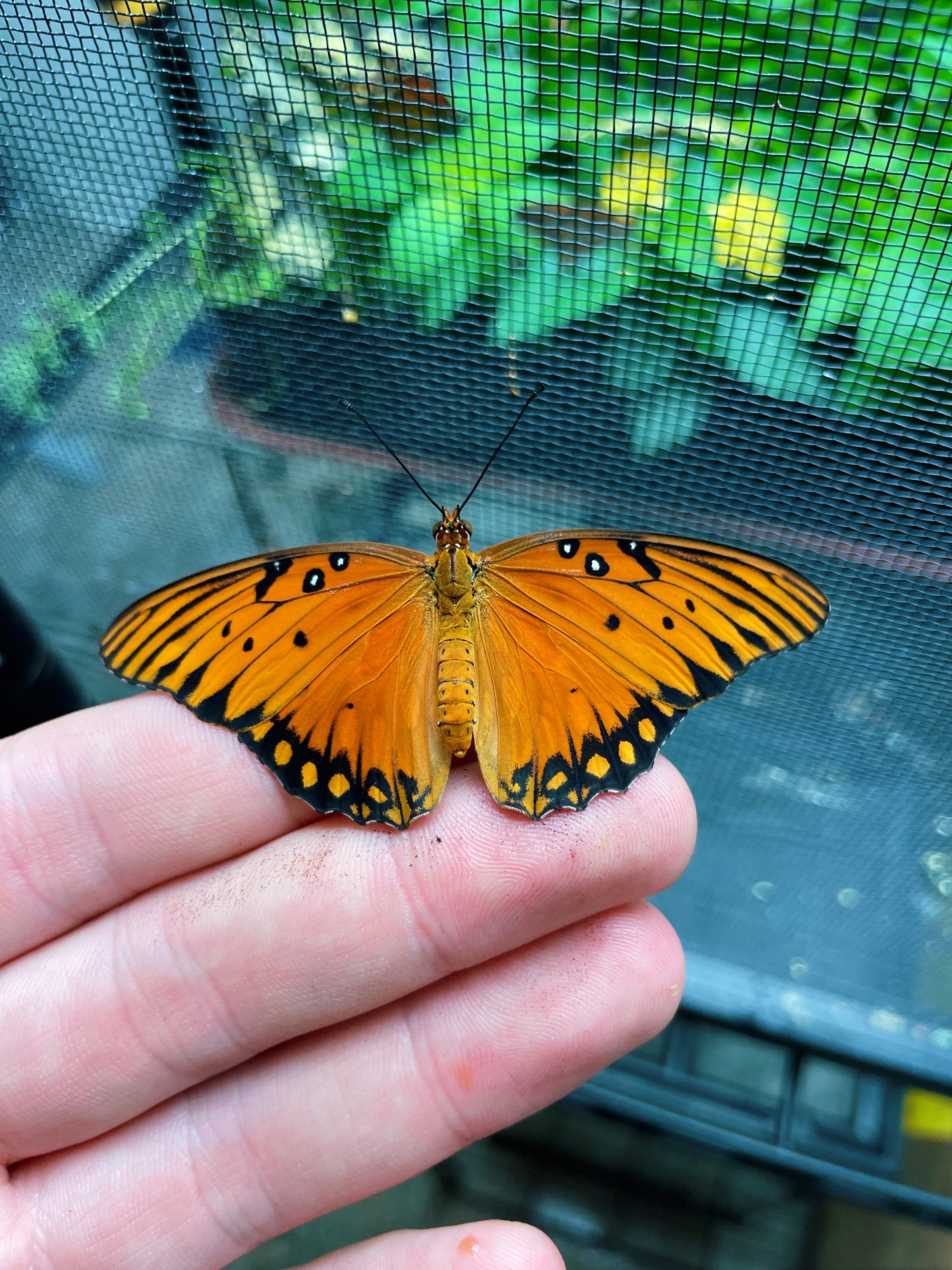Bugs & Butterflies UK
Gulf Fritillary PUPAE (Agraulis vanillae)
Gulf Fritillary PUPAE (Agraulis vanillae)
Couldn't load pickup availability
Agraulis vanillae, commonly known as the Gulf Fritillary, is a beautifully coloured and highly patterned butterfly species belonging to the subfamily Heliconiinae within the family Nymphalidae. Recognized for its vibrant orange wings marked with black spots, this butterfly is widely distributed across the southern United States, Central America, and South America. Its upper wing surfaces are bright orange with black markings, while the undersides are brown with silvery white spots, giving it a distinctive appearance even at rest.
This species is closely associated with passionflower vines (genus Passiflora), which serve as the primary host plants for its larvae. Female gulf fritillaries lay their eggs on the leaves, stems, or tendrils of these plants. Upon hatching, the caterpillars feed on the foliage, often consuming large amounts before pupating. The larvae are also bright orange with black spines, which help deter predators. Adult butterflies feed on nectar from a variety of flowers, contributing to pollination as they forage.
Agraulis vanillae is known for its semi-migratory behavior, particularly in the United States where it expands northward during warmer months and retreats southward in cooler seasons. It thrives in open, sunny habitats such as gardens, fields, and coastal areas. Its vivid coloration and frequent presence in butterfly gardens make it a favorite among nature enthusiasts.
Despite its beauty, the gulf fritillary's lifecycle and survival are tightly linked to the availability of passionflower vines. Habitat loss and climate change can impact its populations by reducing the abundance of host plants. Nevertheless, in regions where its host plants are cultivated or grow naturally, Agraulis vanillae remains a common sight.
Difficulty - Easy (2/10)
Host plants - Passionvines (various Passiflora.)
Temperature - Warm room temperature or a greenhouse.
Lifecycle - Continually brooded; adults can live for many weeks.
Share







